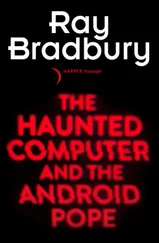Brøderbund is now around the tenth largest software publisher in the microcomputer industry, while the software industry itself has become a significant slice of the gross national product. Indeed, the software business, and particularly software people, seems to have attracted a disproportionate amount of attention from the general public.
Most people are not particularly interested in investment bankers or manufacturers of pantyhose. But the readers of magazines as different as Time and Ms. , Fortune and Playboy , Forbes and Cosmopolitan have been eagerly following the tales of Adam Osborne and Steve Jobs, Bill Gates and Mitch Kapor. Perhaps the sudden fascination with microcomputer Wunderkinder is a result of the youth of these entrepreneurs. Perhaps it is because people sense (or are told) that this mysterious, intangible, and volatile new commodity promises to have an unprecedented impact on America and the world. It also could be due to an interest in Horatio Alger stories like ours and those of people who have made a lot more money than Gary and I have.
Or perhaps it is because people are always intrigued by extraordinary characters who do what they do because they love doing it and, almost unintentionally, end up changing the face of our society in the process. I know that I continue to be fascinated with software people, many of whom happen to be my relatives, my friends, my employees, and my business associates. Some of them think and behave in ways that have to be labeled eccentric. Some of them are no more eccentric than an insurance salesman. Many of them are extremely bright, even geniuses, when it comes to thinking up the intricate codes that cause computers to serve as video games, software tutors, or electronic accountants. Some of them know little about programming but a great deal about marketing products. All of these people share, in varying degrees, an obsession with personal computer software—an obsession that in fact led to the birth and phenomenal growth of an entire industry.
The primary reason for this book is to tell the stories of the remarkable people who created and have been the driving force behind the microcomputer software industry. Although I make no claim to being an official historian of the industry, I hope to convey something of its unique nature by describing the people I know or know about who have played major roles in the evolution of the software business from its infancy to its coming of age.
Time is highly compressed in the software business because computer technology changes so quickly. The period during which the events in this book took place, from the age of the first hobbyist computer, the Altair, to the present era of Apple and IBM, lasted only around ten years. The first, strictly hobbyist phase of the personal computer industry began in 1975, when a few intensely devoted hobbyists began to put together their first Altair kits. By 1978, the hobbyists were putting together companies to sell the first generation of home computers that didn’t have to be assembled from kits. By 1980, the newborn video game and personal computer companies had grown at a dizzying speed into a billion-dollar industry.
For a time, it seemed that all who dipped their pans in the software stream came up with a few nuggets, if not an entire lode. The software gold rush began in 1980, the first of several years in which teenage programmers and software entrepreneurs who were still in their early twenties made personal fortunes.
Until the middle of 1983, companies continued to proliferate and prosper, riding the unprecedented annual rates of growth in the computer industry. Then the personal computer market began to level off, and people who had been making fortunes for years suddenly found themselves losing fortunes in months. This period, which extended through 1984, is the era generally referred to as “the shakeout.” In examining the shakeout, which was at least as important to the history of the software industry as was the gold rush (albeit less glamorous), I have attempted to point out some of the underlying causes of several of the business disasters that occurred during that period.
In this book are the stories of people who lived the events of these various software eras. Although the individual stories overlap, the overall order of their presentation is roughly chronological, progressing from the hobbyist days through the early years, the gold rush period, and beyond the shakeout to the present.
Each of the people profiled in this book helped to shape the extraordinary character of the software industry. Intense, volatile, creative, lucrative, adventurous, and regularly eccentric—it is an industry that, in terms of its spirit and complexity, is quite unlike most other contemporary American businesses. Moreover, it is dominated not by a single type of individual but by a variety of people. The hobbyist-programmers might have started the whole thing, but the sudden blossoming of the home computer software industry came about as a result of the efforts of many different kinds of people who played very different roles—programmers, entrepreneurs, publishers, developers, and marketers. And the nature of their products varied just as widely across different software genres that addressed very different markets, from games to business productivity tools to educational programs. If anything, the software community is an eclectic collection of different interests, linked only by the personal computer that makes the market possible.
Some of the people I’ve written about here were included because of their importance to the software industry. Some people are included because they exemplify a certain kind of software legend. Some of them are my friends or acquaintances whose stories are closely related to mine. There are many stories I did not tell, including those of many friends. To them I apologize—my intent was more to give a feeling for the industry than to provide the definitive history.
Many of the principals in the industry, whom I did not know personally when the events described here happened, were interviewed for the purposes of this book. In other cases, where I did not interview the subject in person, I have done my best to sift the most likely true stories from the vast and contradictory lore of software legends, which are already becoming embellished with each retelling as the age of the Altair recedes into history.
Bill Gates and and Paul Allen are foremost among the people who are included here. Their names cannot be omitted from any history of the software industry—partially because of the continued success of their company, Microsoft, and partially because they were present at the beginning of the microcomputer era, during the pioneering Altair days. Gates was nineteen years old when he left Harvard to join Allen in New Mexico to create software for the first hobbyist microcomputer. Less than ten years later, the company they founded topped $100 million in sales.
Other major figures in the founding of the microcomputer software industry include Dan Bricklin and Bob Frankston, who came up with the first microcomputer spreadsheet, VisiCalc, and Dan Fylstra and Peter Jennings, whose company, VisiCorp, marketed Bricklin and Frankston’s product, making it the first phenomenal best-seller in the micro market. Their program made the four principals millionaires, established personal computers in the business world, and ensured the early success of Apple because so many business people bought Apples to run VisiCalc.
Without programmers, there would be no software industry. The legendary programmers of the gold-rush years number in the dozens. I chose three for this book. One of them, Bill Budge, is not only an example of the new breed of programmer as fine artisan, but also an old friend of mine. His programs Raster Blaster and Pinball Construction Set were milestones in software history, acclaimed for their artistry as well as the sheer dollar volume of their sales.
Читать дальше










